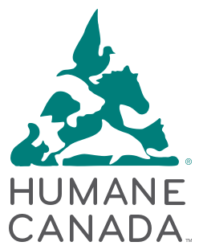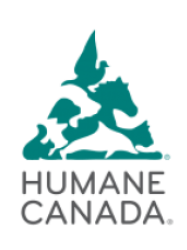Can I rescue a purebred dog?
Are you interested in a purebred dog? Did you know that shelters commonly report that about a quarter of their dogs are purebred? There are also many breed-specific rescue groups.
Be sure to do some research on different dog breeds before you visit a shelter or breeder to choose a dog. Certain breeds of dog have very specific needs and temperaments that may not be suitable for first-time dog owners, people living in apartments and so on.
Puppy or adult dog?
Puppies
Puppies are a lot of work – they need to eat often, pee and poop often, they need frequent cuddles and playtime and they can’t be left alone all day. Four hours is the maximum time you should leave a young puppy in a crate. Crate training is the widely-accepted best method for house-training, preventing inappropriate chewing and other undesirable behaviours.
A crucial aspect of raising a puppy is daily training and socialization to help them grow up to be a well-adjusted dog. Raising a puppy takes a lot of time, commitment, patience and consistency for the first year, but all that work will pay off with a dog that is well-behaved, well-socialized and well-adjusted. A puppy is not the best choice if you have a very hectic schedule.
If you are considering a puppy, please take the time – before you make the commitment – to learn what it takes to raise a good canine companion.
Adult Dogs
You’ll still need to devote plenty of time to an adult dog – getting to know each other, developing a routine and learning how to trust and respect each other. Many grownup dogs are already house-trained and socialized, which will spare you the experience of a puppy eating your slippers, chewing your furniture and peeing on your plush carpet.
Because an adult dog’s personality is already well-established, you can be sure that the goofy, sweet dog you meet at the shelter will be the same goofy, sweet dog two years down the road. Of course, some grownup dogs were never taught proper behaviour, so you’ll need to provide leadership and a structured environment to teach them good manners. Obedience classes that use positive, humane training methods are a great way for dog owners to bond with their pooch and learn to communicate with one another.
Senior Dogs
There’s something very special about adopting a senior dog, giving them a loving home to live out their final years in comfort. Of course, they are calmer and mellower than puppies and adolescent dogs, but they still need to be walked twice a day, as well as playtime and plenty of affection.
With senior dogs, what you see is what you get; their personalities won’t change. However, a shy dog that lived a somewhat neglected life will often come out of his or her shell in a stable and caring environment. People often say you can’t teach an old dog new tricks, but it’s not true. Dogs are amazingly adaptable and can learn new things at any age.
The downside of adopting a senior dog is that they probably won’t be with you as long as a young dog. But your life will be enriched by their sweet presence, and you’ll feel the reward of knowing you’ve given a gift to a dog in need.
Which breed or temperament is best for me?
No matter what your style, a dog is a dog, whether it’s a purebred from champion lines or a mixed breed of unknown parentage. They all have the same needs – companionship, exercise, good food, health, comfort and a safe place to live.
Some people have their hearts set on a certain breed, while others cherish mutts or mixes – with no pedigree but plenty of love to give! Regardless of which you choose, the most important thing is that you select a dog that is well-suited to you and the members of your household, including your lifestyle and your living space.
Cross-breeds and mixed breeds
Cross-breeds are a mix of two purebreds. Mixed breeds, also known as mutts or “Heinz 57s”, are of mostly unknown heritage. Mixes and crosses are generally considered healthier than purebreds because they have greater genetic diversity. If a lovable mutt is your style, there are lots of them waiting for you at your local humane society, SPCA, rescue or municipal pound.
The term “designer dog” refers to cross-breeds with catchy names, such as Labradoodle (Labrador Retriever crossed with Standard Poodle), Puggle (pug/beagle), and Schnoodle (Schnauzer/miniature poodle). There has been an explosion of designer dogs in recent years, largely fueled by media attention and the celebrities who acquire them. With this popularity and intrigue come ridiculously inflated prices. Why pay thousands of dollars for a “designer” cross breed when you can adopt from a shelter and save a life at the same time?
The purebred option
If you have your heart set on a particular breed, please do your research to make sure this breed is a good fit for you, your lifestyle and your household. Like many things in life, looks can be deceiving so don’t make your decision based on appearance alone. Consider energy levels, behaviour traits and personality, and be sure to meet several dogs of that breed before making a final decision.
A good place to start is to learn about the different groups of dog breeds established by the Canadian Kennel Club. The breeds in each group have been bred for a similar purpose, so they will have somewhat similar personalities and behaviours. Learning about each group will help you narrow down your choice by identifying which breeds would be best for you, and which you should avoid.
Below, you’ll find description of the seven breed groups recognized by the Canadian Kennel Club, adapted from CanaDogs.ca:
Sporting Dogs: Sporting dogs were originally bred to find, flush out and retrieve game birds on land and in water. This group is mostly made up of the pointer, setter, spaniel and retriever families of dogs. They are intelligent companions that are usually willing, trainable, playful and very energetic. Some have been used as guide dogs. Sporting dogs vary in size, with spaniels being the smallest, and are generally popular with children. Most of these dogs need a lot of exercise and human companionship and may not be suitable in households where the people are gone all day.
Hounds: Hounds were bred for hunting/tracking people or animals by using their eyesight and/or sense of smell. They are independent characters that are used to working alone. Easily distracted by movement or interesting scents, they may be a training challenge as they are keen hunters. Sighthounds follow their prey by sight and can run like the wind. Scenthounds use their noses to track their prey. Hounds range in size from the tiny Dachshund to the massive Irish Wolfhound. Some of these dogs require minimal exercise while others need a large, enclosed running space.
Working Dogs: Working dogs are the guard and draft workers, originally bred to work alongside their humans. They have been used as sled dogs, guarding and protection dogs for livestock and people, and guiding and rescuing dogs. These dogs are territorial, strong and confident and require a similarly strong-willed master. The dogs in this group, which includes many of the large and giant breeds, were bred to work and they are happiest when they’ve got a job to do. Many make excellent pets, being fiercely loyal and intelligent. However, for some, the demands of their size, strength and protective instincts require experienced owners. Some of these breeds may not be suitable for young children.
Terriers: Independent, spunky, tough and determined, terriers were bred to hunt rats and other vermin by going into their burrows. Tenacious terriers have also been used for guarding, pit fighting and especially hunting small predators such as badgers, foxes and rabbits. They are relentless and know no fear or pain when on the job. Terriers have been described as having a big dog personality in a small body. They are a high-activity dog and are therefore not for everyone. Terriers can be a great match for those with allergies, as many of these dogs have wiry but non-shedding coats. Properly trained and socialized, they can make good house pets, but remember: they love to dig and bark.
Toys: Miniature or toy dogs were bred to be companions and lap dogs. Due to their small size, they are sensitive to extremes of heat and cold and rely on human care to survive. Toys require less exercise than most other breeds and tend to be long-lived, affectionate and adaptable. They make an ideal pet in situations where keeping another dog would seem impossible. Toys range in size from approximately 1-18 pounds. They can be very high-strung and may not be suitable in households with boisterous young children.
Herding Dogs: Developed mainly as sheep and cattle herders (to keep the flock together) or drovers (to drive the animals to market), the dogs in this group have worked alongside their humans for centuries. Breeds in this group include collies, shepherds and corgis. They are very intelligent and make natural watchdogs. They vary in size from small to large and many have thick, double coats that protect them from extremes of weather. These breeds are popular as pets because of their obedience and willingness to work. They are active dogs that love to work and are eager to please, but owners must be prepared to find channels for their abundant energy. Remember, these dogs will herd anything – even kids – if they have nothing else to do.
Non-Sporting Dogs: This group has the largest variety of dogs because it functions as a collection of breeds that are hard to classify in any of the other groups. They may be dogs that used to perform vital tasks that are no longer required, such as the Dalmatian. They may be dogs like the Bulldog used years ago in the now-illegal game of bull-baiting. Many of these dogs were companions or watch dogs. With such a variety of animals, this group has likely got something for everyone!
Bred to the extreme
Humans created the many breeds of dogs we now have, and each breed has a “breed standard” that describes the breed’s appearance, inherent characteristics and temperament. Unfortunately, some breed standards are so extreme and unnatural that they actually cause significant health problems for the animals.
For example, Bassett Hounds and Dachshunds have such long bodies and such short legs that they are prone to back problems. The wrinkled Shar Pei might look cute but is prone to chronic skin problems.
One of the most extreme cases is the English Bulldog, which suffers from a condition called Brachycephalic Syndrome. Their massive head, very short muzzle and pushed-in face (as described in the breed standard) causes obstruction to their airway, resulting in breathing problems – especially when it’s hot out or when they exercise.
Other Brachycephalic breeds include the Pug, Boston Terrier, Pekingese, Cavalier King Charles Spaniel, Chinese Shar Pei, French Bulldog, Lhasa Apso, and Shih Tzu.
Brachycephalic syndrome causes these dogs to snuffle and snort but can also cause gagging, fainting, sleep disorders, heart troubles and gastrointestinal problems. English Bulldogs in particular have great difficulty breeding naturally, and whelping puppies usually requires a Caesarian delivery due to the extreme head size.

